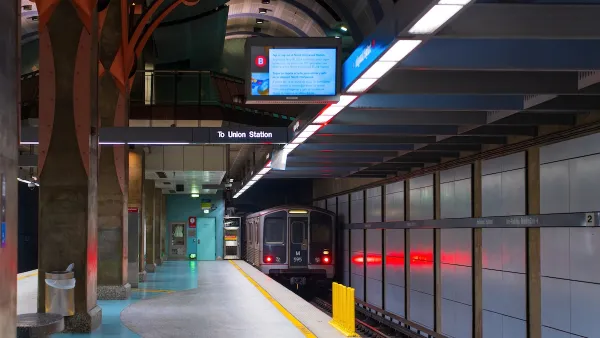In April 1992, L.A. erupted in a torrent of burning, looting, and rioting following the acquittal of three police officers charged in the beating of Rodney King. Josh Sides looks at how the city responded to those events and how it's changed since.
While the riots coincided with the acquittal of three of the four officers charged in the videotaped beating of King, they were the result of so much more.
As Sides asserts, "In the wake of the riots, planners, politicians, investors and community leaders offered up good-hearted and ambitious proposals to alleviate the chronic problems of unemployment, poverty, poor health, social isolation and physical abuse at the hands of law enforcement agents. But very few of these proposals produced fundamental changes in South Central L.A., especially for its African-American residents; and ultimately the most enduring change in the area over the past two decades - the transformation from an infamous black ghetto to a predominantly Latino immigrant community - was never planned. In many respects the story of South Los Angeles since 1992 is a cautionary tale, one that reminds us of the profound limits of planning and policy-making in regions of extraordinary demographic dynamism."
Sides looks at institutional efforts such as Rebuild LA, the "most high profile and ambitious response" that would "repeatedly overpromise and underachieve," and land use oriented initiatives such as liquor store abatement and the establishment empowerment zones, for signs of success and finds that demographic trends are the primary cause for the revitalization of the areas in which the riots were ignited.
FULL STORY: 20 Years Later: The Ambiguous Legacies of the Los Angeles Riots

Maui's Vacation Rental Debate Turns Ugly
Verbal attacks, misinformation campaigns and fistfights plague a high-stakes debate to convert thousands of vacation rentals into long-term housing.

Planetizen Federal Action Tracker
A weekly monitor of how Trump’s orders and actions are impacting planners and planning in America.

In Urban Planning, AI Prompting Could be the New Design Thinking
Creativity has long been key to great urban design. What if we see AI as our new creative partner?

Cal Fire Chatbot Fails to Answer Basic Questions
An AI chatbot designed to provide information about wildfires can’t answer questions about evacuation orders, among other problems.

What Happens if Trump Kills Section 8?
The Trump admin aims to slash federal rental aid by nearly half and shift distribution to states. Experts warn this could spike homelessness and destabilize communities nationwide.

Sean Duffy Targets Rainbow Crosswalks in Road Safety Efforts
Despite evidence that colorful crosswalks actually improve intersection safety — and the lack of almost any crosswalks at all on the nation’s most dangerous arterial roads — U.S. Transportation Secretary Duffy is calling on states to remove them.
Urban Design for Planners 1: Software Tools
This six-course series explores essential urban design concepts using open source software and equips planners with the tools they need to participate fully in the urban design process.
Planning for Universal Design
Learn the tools for implementing Universal Design in planning regulations.
Appalachian Highlands Housing Partners
Gallatin County Department of Planning & Community Development
Heyer Gruel & Associates PA
Mpact (founded as Rail~Volution)
City of Camden Redevelopment Agency
City of Astoria
City of Portland
City of Laramie




























